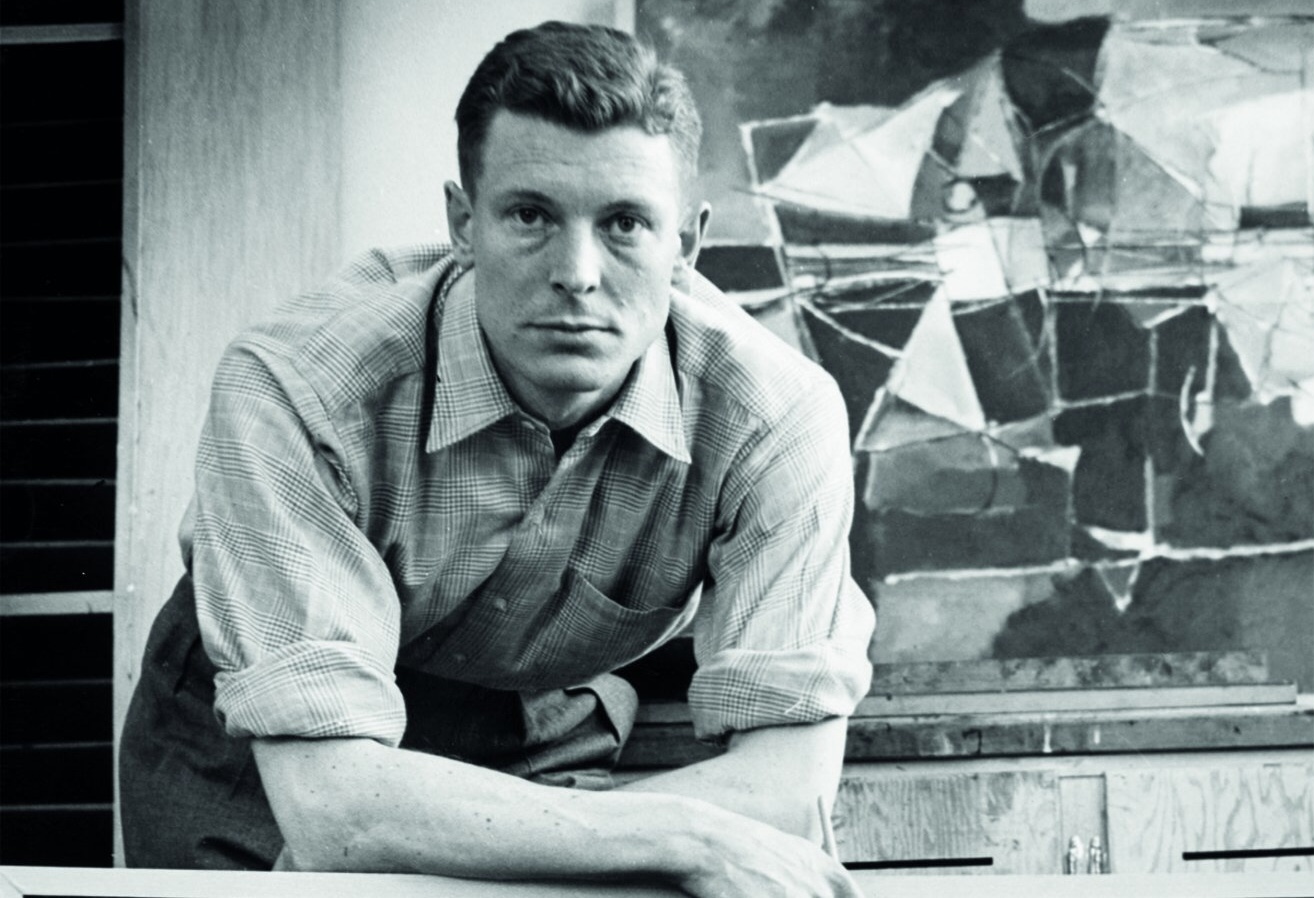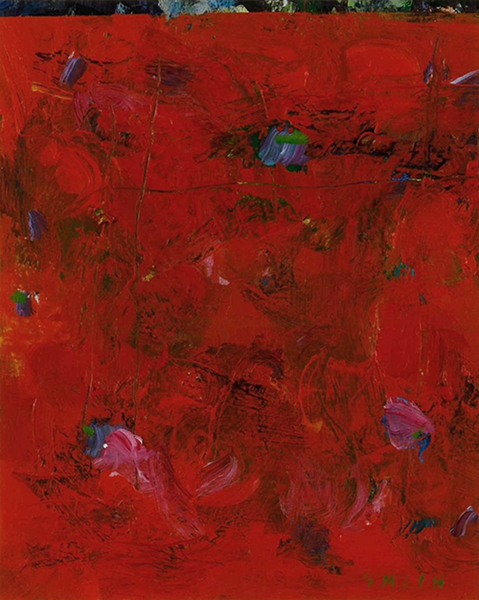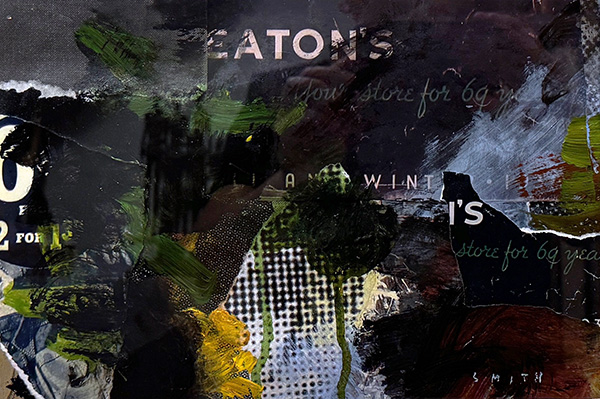Gordon Smith
Gordon Smith (1919-2020) – Biography
Described by many as the quintessential modernist, Gordon Appelbe Smith was born in East Brighton, England in 1919 and came to Winnipeg in 1933 where he enrolled at the Winnipeg School of Art. By 1951 Smith was living in Vancouver with his wife, Marion, and had begun teaching at the Vancouver School of Art. He did some painting of his own, but most of it was shy and stilted, and shared the subject matter of Lawren Harris and Emily Carr. That year, Smith knew his art needed a jolt of adrenaline, so he went to San Francisco and enrolled in the California School of Fine Arts, then famous for housing members of the Bay Area school of Abstract Expressionism.
When he returned to Vancouver he became part of a cadre of modernists centred around the University of British Columbia and the Vancouver School of Art, most of them teachers as well as artists, like Jack Shadbolt, B.C. Binning, Alistair Bell, Bruno and Molly Bobak, and Arthur Erickson. Smith launched himself headlong into Abstract Expressionism from the mid-1950s onward. It wasn't until he was teaching at UBC, he discovered the colour theory of Joseph Albers and Johannes Itten, and began applying it to his art, producing a series of hard-edged colour field works focused on creating color harmonies that used difficult colors, like purples, greens, and yellows. In the 1970s, Smith returned to painting semi-abstract paintings of the sea and shore near Vancouver.
Following this breakthrough, his work reverted back to a form of romantic lyric abstraction that balances the pervasive influence of the West Coast landscape with a gestural, non-objective manner of painting. This gestural quality became particularly pronounced in his work after the mid-1980s.
Throughout his career, Smith had more than 25 solo exhibitions at Vancouver’s Equinox Gallery and participated in biennials in Brazil and Canada. He and architect Arthur Erickson, who designed Smith’s first and second homes, collaborated on the design of the Canadian Pavilion at Expo 70 in Osaka, Japan. Smith was also commissioned to provide major works to Canada House in London, England; the Chan Centre For the Performing Arts in Vancouver; Simon Fraser University in Burnaby; the West Vancouver Community Centre; and the Surrey Public Library. In 1997, the Vancouver Art Gallery mounted a 55-year retrospective of his work, which was accompanied by a major book. Smith and his work were also the subject of David James’s 2008 documentary, Gordon Smith: The Reflective Canvas.
Selected Collections:
National Gallery of Canada, Ottawa
Albright-Knox Members Gallery
Albright-Knox Purchase for Maine Midland Bank Building, Buffalo
Art Gallery of Ontario
Toronto Ashmolean Museum
Oxford Birmingham Art Gallery, Birmingham, England
B.C. Provincial Art Government Art Collection, Victoria
Canada Council Art Bank
Carnegie Foundation, New York
Confederation Art Gallery and Museum
Department of External Affairs, Ottawa
Glenbow Museum, Calgary
Hart House Gallery, University of Toronto, Toronto
Lethbridge Art Gallery, Lethbridge
London Regional Art Gallery, London
Mendel Art Gallery, Saskatoon
Montreal Museum of Fine Arts, Montreal
Museum of Modern Art, New York
National Collection, Smithsonian Institute, Washington
National Museum of Wales , Cardif, Wales
Sir George Williams Art Gallery, Concordia University
South London Art Gallery, London, England
Vancouver Art Gallery
Victoria and Albert Museum
Victoria Art Gallery
Selected Awards:
Honorary Doctor of Laws, Simon Fraser University (1973)
Honorary Doctor of Letters, Emily Carr University of Art and Design (1995)
Member, Order of Canada (1996)
Order of British Columbia (2000)
Honorary Doctor of Letters, University of British Columbia (2001)
Audain Prize for Lifetime Achievement in the Visual Arts, Audain Foundation (2007)
Governor General's Award in Visual and Media Arts (2009)
Queen Elizabeth II Diamond Jubilee Medal (2012)
Honorary Doctor of Letters, Vancouver Island University (2013)
Artist Specialization: Abstracted Landscape and Colour Field Painting: Most of Smith's work reflected the landscape and natural world around him. His pieces are often a sweeping tangle of form and colour.




